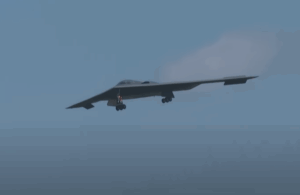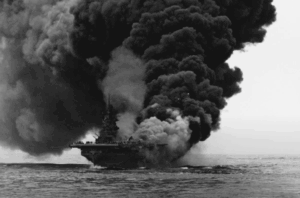This Plane Was Considered the Most Terrifying WWII Dive Bomber

sunburn / YouTube
The Stuka dive bomber, known for its precision and psychological impact, became one of the most feared weapons of World War II. Its unique design, tactics, and sound struck fear into both soldiers and civilians. This aircraft not only defined a new era of aerial warfare but also placed immense physical and psychological demands on its crews.
After World War I, Germany was restricted from developing weapons, including military aircraft. However, when new leadership rose to power in 1933, these restrictions were ignored, and clandestine projects began. Among these was the Ju 87 Stuka. To circumvent the prohibition, the aircraft’s predecessor, the K 47, was presented as a civilian design. It featured a rugged two-seat layout with twin rudders and a rear gunner position. Initially, it was a stepping stone to creating a military-grade dive bomber, capable of delivering bombs with unprecedented accuracy. Early prototypes of the K 47 helped engineers explore the possibilities of steep, controlled dives, a technique crucial for accurate strikes.
Evolution and Challenges of Dive Bombing in WWII

Traditional bombers during the era relied on horizontal flight paths, releasing their payloads at high altitudes. This approach was imprecise, as bombs often missed their targets due to the limited technology of the time. Dive bombing offered a solution. By descending at steep angles ranging from 60 to 90 degrees, pilots could achieve a direct line of sight to their targets. This increased accuracy significantly, allowing fewer bombs to achieve greater damage. However, dive bombing also introduced extreme physical strain and required robust engineering to handle the stress of such maneuvers.
The early tests with the K 47 were fraught with challenges. In one tragic incident, a prototype’s tail section failed during a dive, causing a fatal crash. This highlighted the need for reinforced structures to withstand the immense forces of vertical dives. After several design revisions, the Ju 87 Stuka emerged as a specialized dive bomber equipped to deliver both physical destruction and psychological terror.
The Stuka’s distinctive inverted gull-wing design improved stability and reduced drag, enabling precise handling during dives. It carried a two-person crew—a pilot and a rear gunner armed with a machine gun for defensive purposes. The Stuka’s armament included bombs ranging from 250 kilograms to a massive 1,000 kilograms. These payloads could vary based on mission requirements, including cluster bombs and incendiary devices designed to penetrate fortified targets. Its offensive capabilities were further complemented by fixed machine guns mounted on the wings, which were effective for strafing runs.
The Stuka’s Psychological Warfare and Dive Bombing Technique

One of the Stuka’s most unsettling features was its “Jericho trumpet.” This simple yet effective device, mounted on the aircraft’s landing gear, emitted a high-pitched wail during dives. The sound, resembling a human scream, was engineered to cause panic among those on the ground. Even before the bombs hit, the Stuka’s approach struck terror into soldiers and civilians alike. The psychological impact of this sound was so significant that it became a symbol of fear during the war. However, as the war progressed and the need for stealth and efficiency grew, the siren was often removed to improve performance.
A typical Stuka dive began at an altitude of approximately 15,000 feet. The pilot would roll the aircraft into a steep descent, reaching speeds of over 600 kilometers per hour. To aid in precision, air brakes were deployed under the wings, slowing the descent and allowing more time to aim. The bombs were released at around 1,500 feet, after which an automatic recovery system pulled the aircraft out of the dive. This system was crucial, as the intense G-forces during pullouts often caused temporary blackouts for the pilots. Despite its importance, some crews opted to disable the system, as its predictable recovery pattern made the aircraft vulnerable to ground defenses.
The Stuka’s Impact and Vulnerabilities in WWII

The Stuka’s combat debut occurred during the Spanish Civil War, where it demonstrated its effectiveness in precision bombing. Its full potential was realized during the invasion of Poland in 1939. Coordinated attacks with ground forces devastated infrastructure and troop movements, crippling Poland’s defense capabilities. Bridges, railroads, and bunkers were destroyed with alarming accuracy. The Stuka’s siren, then a relatively new feature, added a layer of terror to these operations, amplifying the psychological impact of the coordinated attacks.
However, the Stuka’s vulnerabilities became evident as the war progressed. It was highly effective when operating in environments with limited air opposition, but its slow speed and lack of agility made it an easy target for more advanced enemy fighters. The single rear gun offered minimal defense, making it reliant on fighter escorts for protection. As air superiority shifted, the Stuka’s role diminished, but its early impact on the war remained undeniable.




















